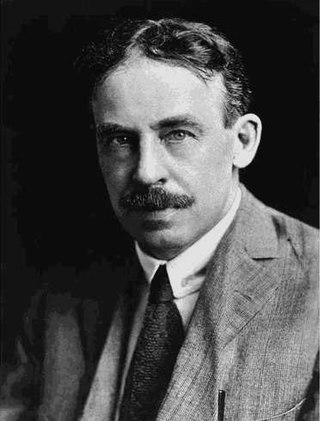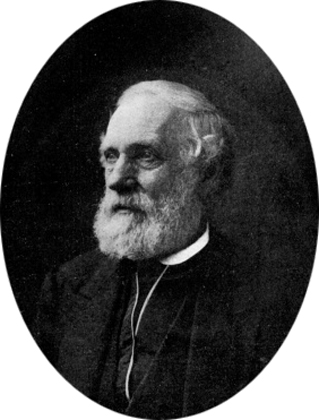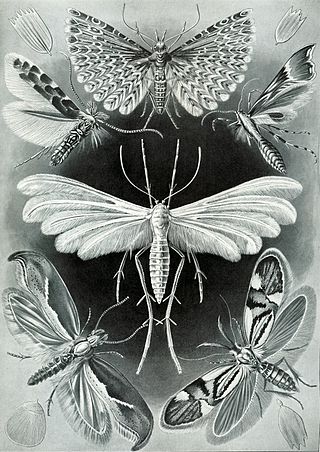
Entomology is the scientific study of insects, a branch of zoology. In the past the term insect was less specific, and historically the definition of entomology would also include the study of animals in other arthropod groups, such as arachnids, myriapods, and crustaceans. This wider meaning may still be encountered in informal use.

William Morton Wheeler was an American entomologist, myrmecologist and professor at Harvard University.

Thomas Say was an American entomologist, conchologist, and herpetologist. His studies of insects and shells, numerous contributions to scientific journals, and scientific expeditions to Florida, Georgia, the Rocky Mountains, Mexico, and elsewhere made him an internationally known naturalist. Say has been called the father of American descriptive entomology and American conchology. He served as librarian for the Academy of Natural Sciences of Philadelphia, curator at the American Philosophical Society, and professor of natural history at the University of Pennsylvania.

Titian Ramsay Peale was an American artist, naturalist, and explorer from Philadelphia, Pennsylvania. He was a scientific illustrator whose paintings and drawings of wildlife are known for their beauty and accuracy.

Samuel Stehman Haldeman was an American naturalist and philologist. During a long and varied career he studied, published, and lectured on geology, conchology, entomology and philology. He once confided, "I never pursue one branch of science more than ten years, but lay it aside and go into new fields."

Agathidium is a genus of beetles in the family Leiodidae.

John Henry Comstock was an eminent researcher in entomology and arachnology and a leading educator. His work provided the basis for classification of butterflies, moths, and scale insects.

Augustus Radcliffe Grote was a British entomologist who described over 1,000 species of butterflies and moths. He is best known for his work on North American Noctuidae. A number of species were named after him, including the moth Horama grotei.
The American Entomological Society was founded on March 1, 1859. It is the oldest continuously operating entomological society in the Western Hemisphere and one of the oldest scientific societies in the United States. Headquartered in Philadelphia, Pennsylvania, it publishes Entomological News, Transactions of the American Entomological Society and Memoirs of the American Entomological Society. It is not affiliated in any way with the similarly named Entomological Society of America.
Paralida is a genus of moths in the family Gelechiidae.

Symphoromyia is a genus of predatory snipe flies. Unusually for Rhagionids, some species of Symphoromyia are known to feed on mammal blood, including human blood. Symphoromyia species are stout bodied flies from 4.5 to 9 mm and with a black, grey or gold thorax, and the abdomen is coloured grey, black, or both black and yellow, black terminating with yellow, to completely yellow. The wings are hyaline or lightly infuscate.

Charles Willison Johnson was an American naturalist who specialized in entomology and malacology, making significant contributions in both fields. He was a mentor and inspiration to many students and young scientists such as William J. Clench. Johnson was Curator of the Wagner Free Institute of Science, 1888–1903, then was Principal Curator at the Boston Society of Natural History, 1903–1932.

George Duryea Hulst was an American clergyman, botanist and entomologist.

James Brackenridge Clemens was an American entomologist who specialized in Lepidoptera. He described many new species. His collection of microlepidoptera is in the Academy of Natural Sciences of Philadelphia.
Diadegma compressum is a wasp first described by Cresson in 1864. No subspecies are listed.

Annette Frances Braun was an American entomologist and leading authority on microlepidoptera, a grouping of mostly small and nocturnal moths. Her special interest was leaf miners: moths whose larvae live and feed from within a leaf.

Morgan Hebard was an American entomologist who specialized in orthoptera, and assembled a collection of over 250,000 specimens.

Mosillus is a genus of shore flies in the family Ephydridae.
James Abram Garfield Rehn was an American entomologist who was a specialist on the New World Orthoptera. He worked at the Academy of Natural Sciences of Philadelphia, making several collection expeditions around the world on their behalf.

Howard Radclyffe Roberts Jr. was an American entomologist known for his work on grasshoppers. His 1941 University of Pennsylvania Ph.D. dissertation was an early work highlighting the role phallic structures could play in grasshopper taxonomy. While serving in World War II, he and Edward Shearman Ross cowrote The Mosquito Atlas, used by the armed forces to identify malaria-transmitting mosquitos. Roberts worked for the Academy of Natural Sciences of Philadelphia (ANSP), serving as its managing director from 1947 to 1972. He described dozens of grasshopper species from North and South America, and also is the eponym of several taxa named in his honor.
















